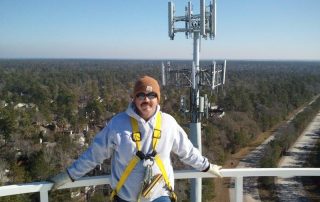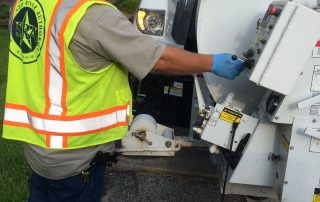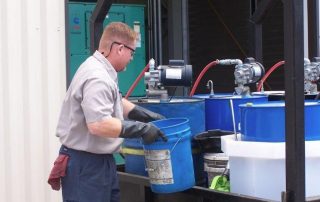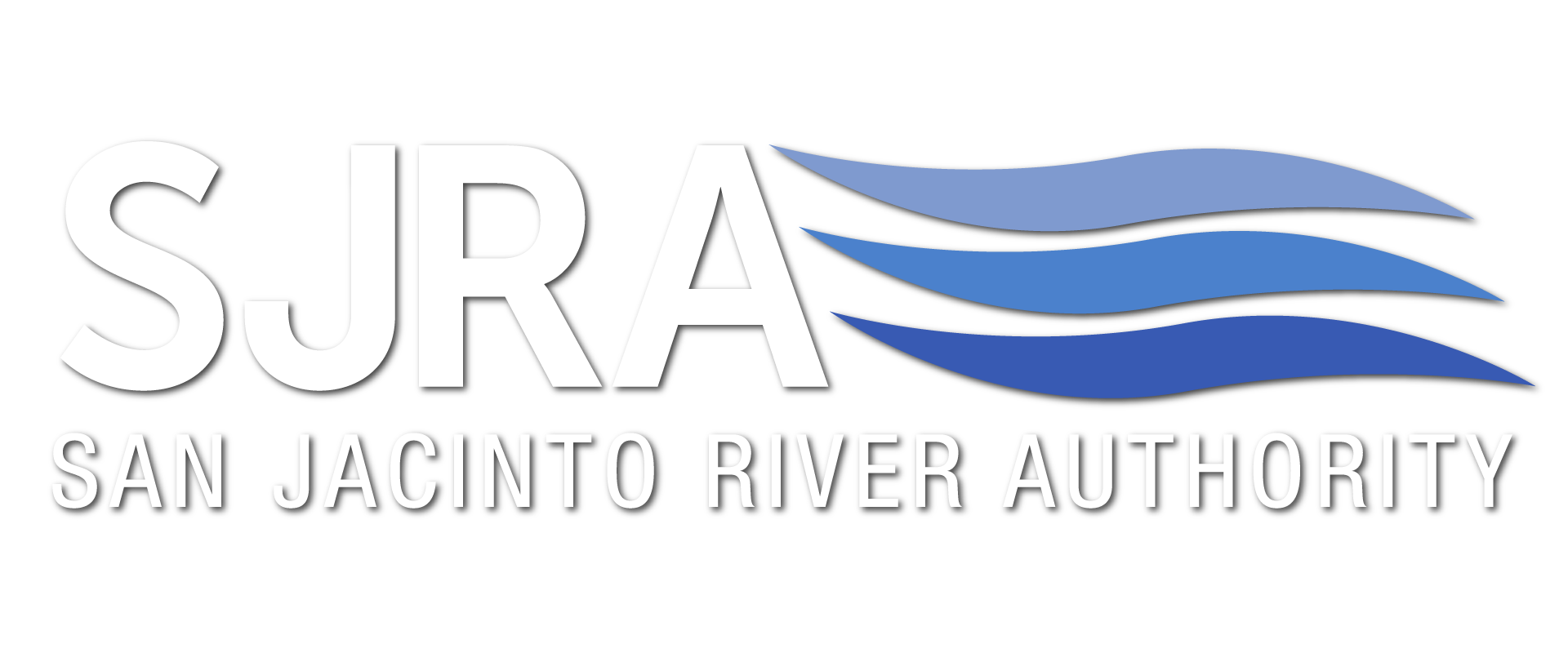By: Chris Meeks, San Jacinto River Authority Woodlands Division Manager
Resilience…Webster’s Dictionary defines resilience as an ability to recover from or adjust easily to misfortune or change. As a Utility Manager for a water and wastewater system, adjustment and change are daily occurrences. Utility Managers take many things into consideration when planning for changing operations including natural disasters, financial impacts of fluctuating usage, and balancing the desire for stable rates with increased maintenance needs. From weather patterns to fluctuating usage to community growth, the daily operations of a water and wastewater system have to be adaptive at all levels. Why? It’s our job at the San Jacinto River Authority (SJRA) to ensure the end-users—all water and wastewater users—never have to think about it.
The area we live in is prone to natural disasters such as hurricanes and flooding. Unfortunately, there is no sure fire way to protect utility assets against these disasters, but there are ways to mitigate negative effects. For example, SJRA Wastewater Treatment Facility (WWTF) No. 1 is located next to Panther Branch on Sawdust Road. Parts of the facility are in the floodplain and without mitigation measures would flood when the creek rises. Many years ago, to mitigate this issue, an earthen levee was installed around the western side of the facility to keep the creek from flooding the plant. Since the levee was installed, the facility has not flooded. Other mitigation measures such as portable generators, spare parts, motors and pumps, in-house repair capabilities, and redundant equipment have assisted the division in maintaining water and wastewater services during these events. These mitigation measures are put in place so when the need arises, staff can quickly restore or recover from natural disasters while avoiding a service disruption.
Weather patterns also have a great effect on water usage. Isolated storms that last a couple of days followed by warm, sunny days is the norm. Long periods of rain as seen between 2015 or more recently, September 2018 – February 2019, reduce water usage and in turn reduce the revenue into a water utility. Being a governmental entity, we have limited reserves to stabilize rates through multiple years of reduced demand caused by higher-than-normal rainfall. We utilize industry best practices and follow industry guidelines to maintain adequate reserves so rates do not fluctuate like a rollercoaster from year to year, but these reserves are typically designed to maintain rates for a couple of years of wet weather. For SJRA Woodlands Division, this means we have a three-month operating reserve and an emergency reserve. The three-month operating reserve assists in maintaining cash flow during periods of wet weather and low water usage. This helps us maintain a steady maintenance and production cycle even when the demand is down. The emergency reserve acts in the opposite manner. This reserve is used only in major emergencies.
Fluctuating usage and community growth also affect service and resilience. When a community becomes built out and growth slows down, demands for water and wastewater services begin to level off and reach a point of more static demand. Over the last 40+ years, The Woodlands, Texas has been growing and expanding. This trend of growing is coming to a close as the available land in the Montgomery County portion of The Woodlands, Texas is developed. A static demand assists in planning efforts for long-term water supply and wastewater services, but it is not always good for financial reasons. The Woodlands area is, in utility terms, a “new” community. Generally, this means that the utility is less than 50 years old. This has pros and cons. The community has a healthy utility system, however the need to replace its assets is increasing. In order to stay on top or slightly ahead of the replacement curve, the renewal of infrastructure such as water and wastewater lines, pumps, motors, concrete tanks, and basins needs to be a priority in order to keep the utility functional with no service disruptions. The renewal of assets takes time and money. Residents in a growing community oftentimes don’t realize the costs of renewing assets as rates can sometimes hold steady since demand increases, however with a community that is not rapidly growing and demands have steadied, rate increases are needed to maintain the desired level of service and keep up with inflation rates. The balance between maintenance needs and rate increases is a delicate one that involves understanding priorities and the associated risk that sometimes comes with delaying projects.
What does this mean to you? This means that every day the employees of the SJRA Woodlands Division conduct tasks to ensure drinking water is clean and within regulations and that wastewater flows away without you having to think about it. This also means that during long-term planning efforts and budget cycles we evaluate needs, priorities, and community impacts balancing these items for the benefit of the entire community. Our goal is to keep rates as low as possible while maintaining the quality and consistency that our customers desire.
One of the major river authorities in Texas, SJRA’s mission is to develop, conserve, and protect the water resources of the San Jacinto River basin. Covering all or part of seven counties, the organization’s jurisdiction includes the entire San Jacinto River watershed, excluding Harris County. If you would like to know more about SJRA, what we do, and how we work for the community, check out our website at www.sjra.net, like SJRA on Facebook @SanJacintoRiverAuthority, or follow us on Twitter @SJRA_1937.
Featured in the November, 2019 Issue of Dock Line Magazine.




